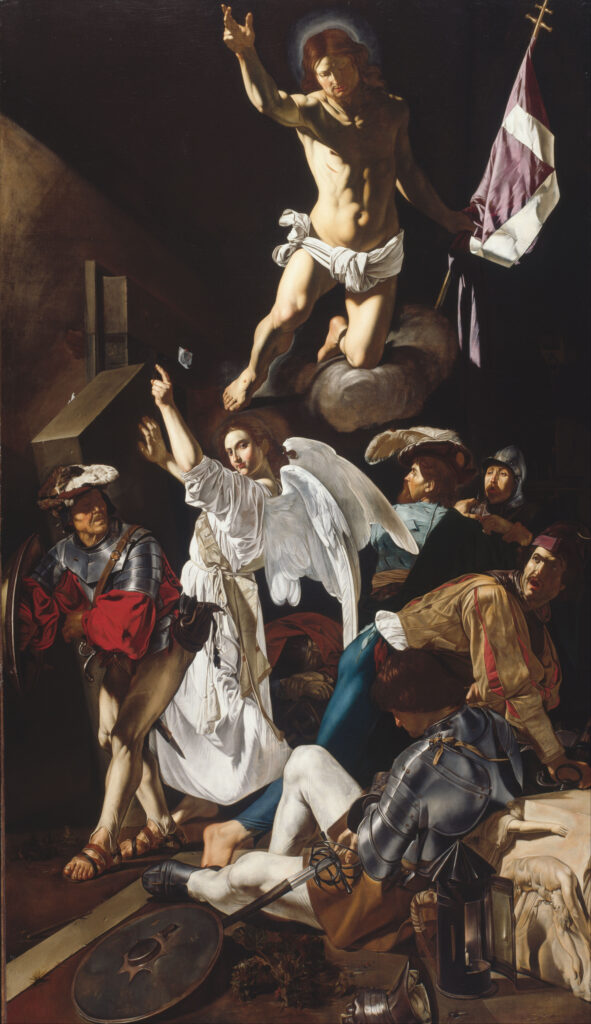Cantata 31 was written for Easter in 1715, during Bach’s Weimar years. It was later reused in Leipzig twice, in 1724 and 1731. Consistent with the festive occasion, it’s scored for big forces – 3 trumpets, timpani, 3 oboes (two of which can alternate with oboe d’amore), taille, bassoon, strings and continuo.
The libretto is by Salomo Franck, Bach’s regular collaborator in Weimar, and the closing chorale comes from a text by Nikolaus Hermann dating from 1575. A close examination of this libretto can leave one scratching their head at the apparent disjointedness starting with the Tenor aria (number 6). What was up until that point a celebratory text on Christ’s resurrection, turns into a sermon on getting ready for our one’s own death. What’s going on?
Bach went to Weimar in 1708 as Court Composer for Duke Wilhelm Ernst of Saxe-Weimar. During his tenure there, he befriended the Duke’s nephew, Prince Johann Ernst, who was a gifted musician and composer of enough stature so as to influence Bach’s own style with the fashionable Italian trends that were becoming better known in Germany. Prince Johann Ernst died when he was only 18 years old, in August 1715, after a long illness which he was already suffering during Easter that year. Though not proven, scholars believe this is the reason why Salomon’s text, and Bach’s music, don’t stay in full-on celebratory mode throughout the entire piece and instead pivot to reflect on what Jesus’ resurrection means in terms of the believer’s own death, to the point of longing for it in the final aria and closing chorale.
The cantata opens with an instrumental “Sonata”, which starts with an imposing unison fanfare that leads to a festive, dance-like theme in triple meter. The unison returns to close the sonata, and the choir delivers the first stanza of Franck’s text, with a fugue in which the theme includes notable word painting for “laughs” (“lacht”) and “rejoices” (“jubilieret”). Interestingly, the writing is in 5 parts both for the voices (with divided sopranos) and for the strings (with divided violas).
Next are 3 sets of recitatives and arias – for the bass, the tenor and the soprano respectively. The bass is accompanied just by basso continuo in both recitative and aria. The recitative, in order to illustrate the text, alternates frequently between recited and arioso passages. The aria uses a dotted “ostinato” line for the continuo, which connects with concepts in the text such as “strong fighter” and “ladder of the Cross”.
The next set is for the tenor. The secco recitative includes runs of sixteenth notes illustrating the Christian’s “fleeing with great haste”. The short aria, in which the libretto shifts in tone as discussed before, has the particularity of having string accompaniment with divided violas.
The soprano recitativo and aria now follow. Due to historical pitch considerations, this cantata is sometimes transposed up a step, resulting in a very high tessitura for the soprano – the word “God” landing on a high B!
The aria is an interesting construct. It features an oboe solo (which can be substituted for an oboe d’amore), and a chorale melody woven throughout, played by the violins and violas in unison, laying much lower than the soprano line. The aria, in spite of being a call for the “last hour” and expressing longing for death, is a happily flowing piece, with melismas represeting the angels (“Engeln”). The pizzicato bass line is characteristic of Bach’s representation of the “last hour” or the passing of time, appearing in several cantatas.
The chorale melody from the soprano aria is now heard again in the closing chorale. Trumpet I and first violins get an independent line crowning the structure, with the rest of the instruments doubling the voices.
